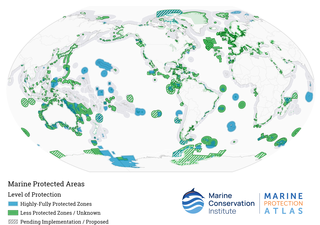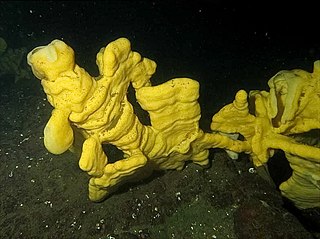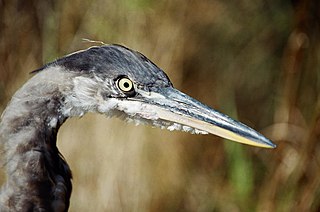Fisheries and Oceans Canada is a department of the Government of Canada that is responsible for developing and implementing policies and programs in support of Canada's economic, ecological and scientific interests in oceans and inland waters. Its mandate includes responsibility for the conservation and sustainable use of Canada's fisheries resources while continuing to provide safe, effective and environmentally sound marine services that are responsive to the needs of Canadians in a global economy.
The Gully is a large underwater canyon in the Atlantic Ocean near the edge of the eastern continental shelf of North America. It is located east of Nova Scotia near Sable Island.

Marine protected areas (MPAs) are protected areas of the world's seas, oceans, estuaries or in the US, the Great Lakes. These marine areas can come in many forms ranging from wildlife refuges to research facilities. MPAs restrict human activity for a conservation purpose, typically to protect natural or cultural resources. Such marine resources are protected by local, state, territorial, native, regional, national, or international authorities and differ substantially among and between nations. This variation includes different limitations on development, fishing practices, fishing seasons and catch limits, moorings and bans on removing or disrupting marine life. MPAs can provide economic benefits by supporting the fishing industry through the revival of fish stocks, as well as job creation and other market benefits via ecotourism. The value of MPA to mobile species is unknown.

Protected areas of Canada consist of approximately 12.1 percent of the nation's landmass and freshwater are considered conservation areas, including 11.4 percent designated as protected areas. Approximately 13.8 percent of Canada's territorial waters are conserved, including 8.9 percent designated as protected areas. Terrestrial areas conserved have increased by 65 percent in the 21st century, while marine areas conserved have increased by more than 3,800 percent.

The Laurentian Channel is a deep submarine valley off the coast of eastern Canada in the Gulf of Saint Lawrence.
A Marine Wildlife Area is a conservation designation for a marine geographical region of Canada that restricts most human activities on that region. It protects marine areas extending from the edge of territorial waters to the boundary defined by Canada's Exclusive Economic Zone, that is, the areas between 12 and 200 nautical miles (370 km) from the coastline. Such areas are established and managed by the Canadian Wildlife Service, a division of Environment Canada. Provisions for their creation are defined in the Canada Wildlife Act.

Sponge reefs are reefs produced by sea sponges. All modern sponge reefs are formed by hexactinellid sponges, which have an endoskeleton made of silica spicules and are often referred to as "glass sponges", while historically the non-spiculed, calcite-skeletoned archaeocyathid and stromatoporoid sponges were the primary reef-builders.

Canada's fishing industry is a key contributor to the success of the Canadian economy. In 2018, Canada's fishing industry was worth $36.1 billion in fish and seafood products and employed approximately 300,000 people. Aquaculture, which is the farming of fish, shellfish, and aquatic plants in fresh or salt water, is the fastest growing food production activity in the world and a growing sector in Canada. In 2015, aquaculture generated over $1 billion in GDP and close to $3 billion in total economic activity. The Department Of Fisheries and Oceans (DFO) oversees the management of Canada's aquatic resources and works with fishermen across the country to ensure the sustainability of Canada's oceans and in-land fisheries.

The Pacific North Coast Integrated Management Area is one of five Large Ocean Management Areas (LOMAs), areas of high ecological, social and economic importance, that have been identified by Fisheries and Oceans Canada (DFO) as priority regions for marine planning as part of Canada’s Oceans Action Plan.

Canadian aquatic invasive species are all forms of life that traditionally has not been native to Canada's waterways. In Eastern Canada, non-native plant and animal species are a concern to biologists. Bringing non-native species such as invasive fishes into Canada can damage the environment and ecosystem by repressing native species due to food competition or preying. Invasive fishes enter the fresh waters of Canada in several ways including drifting, deliberate introduction, accidental release, experimental purposes and, most commonly, through the attachment on international boat hulls. Invasive species are the second biggest threat to fish and other marine life in Canada behind loss of habitat and degradation. The threat to native species is primarily caused by impacts on the food web; however, invasive species also bring dangerous pathogens and physically interfere with existing aquatic life. Invasive species include sea lampreys, zebra mussels, smallmouth bass, European green crab, vase tunicate, and sea squirts.

Sebastes reedi the yellowmouth rockfish, is a species of marine ray-finned fish belonging to the subfamily Sebastinae, the rockfishes, part of the family Scorpaenidae. It is found in the Eastern Pacific.
The marine protected areas of South Africa are in an area of coastline or ocean within the exclusive economic zone (EEZ) of the Republic of South Africa that is protected in terms of specific legislation for the benefit of the environment and the people who live in and use it. An MPA is a place where marine life can thrive under less pressure than unprotected areas. They are like underwater parks, and this healthy environment can benefit neighbouring areas.
The Margaree Salmon Association is a wildlife conservation group that was established in 1982 in Margaree, Cape Breton Island, Nova Scotia, Canada. The association is a nonprofit organization, that dedicates itself to restoration ecology, through conservation, protection and enhancement of spawning and rearing habitat of the salmonid lineage; specific to the Atlantic salmon and trout species. The association engineers habitat enhancing structures into tributaries of the Margaree River watershed. The Margaree River is public domain, attracting yearly visits by anglers near and far. The Association was involved in the nomination and designation of the Margaree River-Lake Ainslie watershed; as a Canadian Heritage Rivers System. As well, the Association works in collaboration with the Inland Fisheries Division of the Nova Scotia Department of Fisheries and Aquaculture and Fisheries and Oceans Canada, to assist with scientific study in areas of broodstock collection, stock assessment and water quality sampling.

Hecate Strait and Queen Charlotte Sound Glass Sponge Reefs Marine Protected Area is a 2,410-square-kilometre marine protected area located in Hecate Strait and Queen Charlotte Sound off the North Coast of British Columbia, Canada. The marine protected area was established in February 2017 with the goal of conserving the biological diversity, structural habitat, and ecosystem function of four glass sponge reefs. These reefs were the first discovered living specimens and are the largest glass sponge reefs in the world.

Tuvaijuittuq Marine Protected Area is a marine protected area located off the northwest coast of Ellesmere Island in Nunavut, Canada. The goal of the marine protected area is to protect the rich biodiversity and dynamism of the High Arctic sea ice ecosystem. Covering an area of 319,411 square kilometres (123,325 sq mi), Tuvaijuittuq is the largest protected area in Canada and among the largest protected areas in the world. It is part of a large oceanic region referred to as the Last Ice Area, located adjacent to the coasts of northern Greenland and the Canadian Arctic Archipelago, which contain and accumulate the oldest remaining sea ice in the Arctic.

The Fisheries Act is legislation enacted by the Parliament of Canada, governing the powers of government to regulate fisheries and fishing vessels. The act has been undergoing major regulatory revisions in recent years, including those attached to treaty rights of Miꞌkmaq in Atlantic Canada. The Minister designated under the Act is the Ministers of Fisheries, Oceans and the Canadian Coast Guard.

The winter skate is a globally endangered species of skate found in the surrounding waters of northeastern North America. They inhabit shallow shelf waters and are prone to bycatch during commercial fishing.

Tarium Niryutait is a marine protected area (MPA) located in the coastal areas of the Yukon and Northwest Territories in Canada. It is located within the Inuvialuit Settlement Region and was the first Arctic MPA established in Canada. The MPA was established with the goal of protecting Beluga whales and the biodiversity of other bird and fish species and their habitats.

The Gwaxdlala/Nalaxdlala (Lull/Hoeya) Marine Refuge is located in Knight Bay on the Central Coast of British Columbia and encompasses Lull Bay, Hoeya Sound and their corresponding watersheds. This Marine Refuge was created in partnership by the Mamalilikulla First Nation and the British Columbia Provincial Government. It was officially established on November 29, 2021, by the Mamalilikulla First Nation. The Lull/Hoeya Marine Refuge was created with the purpose of protecting biodiversity, endangered species, Indigenous culture and heritage, in an area with unique physical geography and oceanography.













